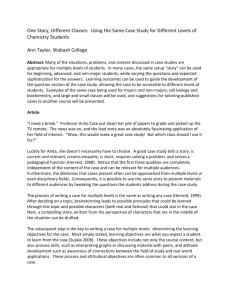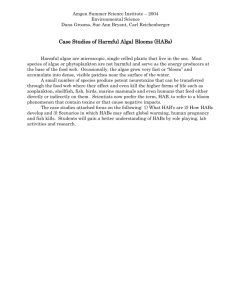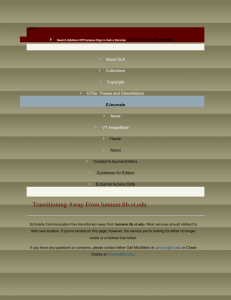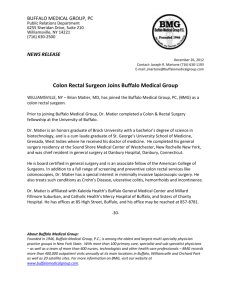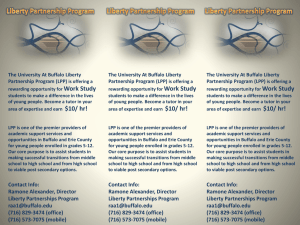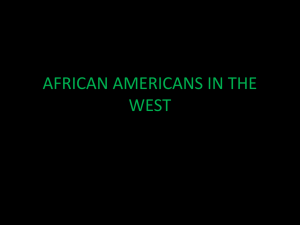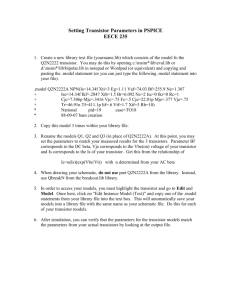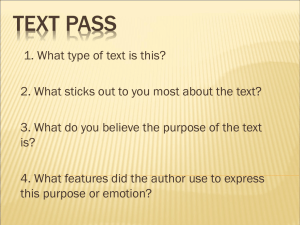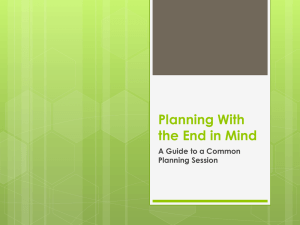Case studies to engage undergraduates in a non
advertisement
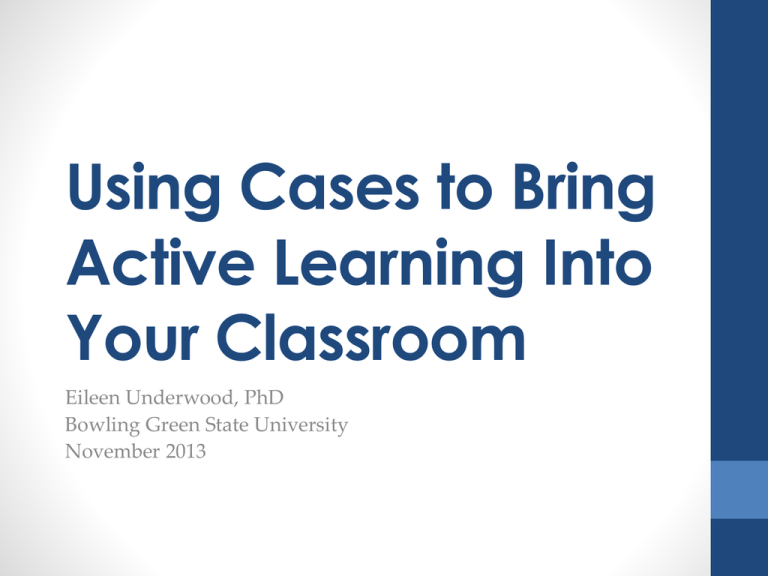
Using Cases to Bring Active Learning Into Your Classroom Eileen Underwood, PhD Bowling Green State University November 2013 The Purpose • Help students get excited about what they are learning • Relate content to real life situations • Give students time to apply what they are learning by giving them time to think about applications and situations • Achieve student learning outcomes in addition to critical thinking, such as interpreting data and graphs The setting My experience is with: • Large lecture hall – stadium seating • 50-210 students • (can also be used in smaller classes) • Use with “clicker” system • (either with clickers or through show of fingers) • Trial use of undergraduate learning assistants (LAs) • Case studies done in groups • Assign student groups of ~6 • Each LA is interacts with ~5 groups • In large lecture hall every 5th row empty – allow instructor/LAs access to students sitting in center • One activity or case study per test unit • (5 per semester) Case studies as an engagement or extension activity • 5 E learning cycle (Bybee) • Engage* • Explore • Explain • Extend* • Evaluate • Rodger Bybee, Achieving Scientific Literacy: From Purposes to Practices. Portsmouth, NH: Heinemann, 1997, pp. 176-185 Case studies • http://sciencecases.lib.buffalo.edu/cs/collection • The mission of the National Center for Case Study Teaching in Science (NCCSTS) is to promote the nationwide application of active learning techniques to the teaching of science, with a particular emphasis on case studies and problem-based learning. Biology for a Changing World, Shuster et al. Story-line approach fits well with use of case study: 2 examples that I use: Forensics case study (following Ch7, DNA structure & replication – DNA profiling) http://sciencecases.lib.buffalo.edu/cs/collection/detail.asp?cas e_id=492&id=492 The Case of the Druid Dracula By Peggy Brickman Cancer case study (following Ch10 Mutations & Cancer) http://sciencecases.lib.buffalo.edu/cs/collection/detail.asp?cas e_id=481&id=481 But I’m too young! A case study of ovarian cancer By Nancy Rice & Bruno Borsari Assessment • Formative • If using for credit – award credit for best effort • Allow make-up opportunities if using for grade? • Summative Pre / Post Assessment Questions for “But I’m Too Young! A Case Study of Ovarian Cancer” • Found in the answer key section of the web-site Additional sources • http://sciencecases.lib.buffalo.edu/cs/collection • Includes links to other case collections • But beware – looking through case studies can be time consuming and habit forming Getting started : planning • Must be willing to “wing it” if necessary • Plan out timing (but be willing to be flexible) • Many case studies have suggested timeline in teacher notes • Keep teaching journal (what worked, what didn’t, what changes should be used next time) Potential concerns: may apply to all active learning strategies • Takes time away from lecture • Only use a few (2-5) per semester • Use “mini-case studies” • Scale down – take less time • Loss of control of classroom • In large lecture may feel like herding cats to bring class back to topic • Chose group to report out – jar of numbered PingPong balls • Smaller class – toss beach ball • Some students may complain professor not “teaching” • Other concerns? Adaptations for use in other class settings • Smaller classes • students can become more involved • clicker questions can be rewritten as open ended questions. • Are any of you using case studies? • Do you have suggestions to encourage use of case studies? • Have any of you developed your own case studies?
